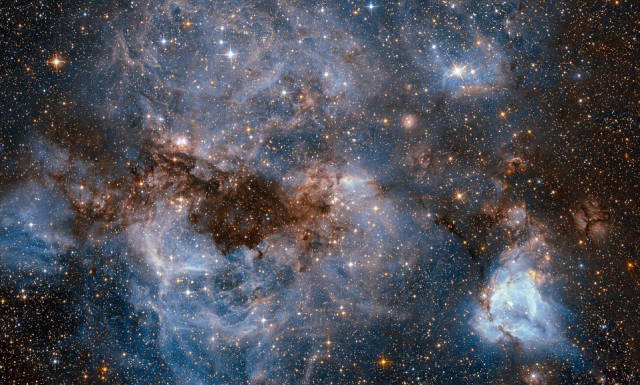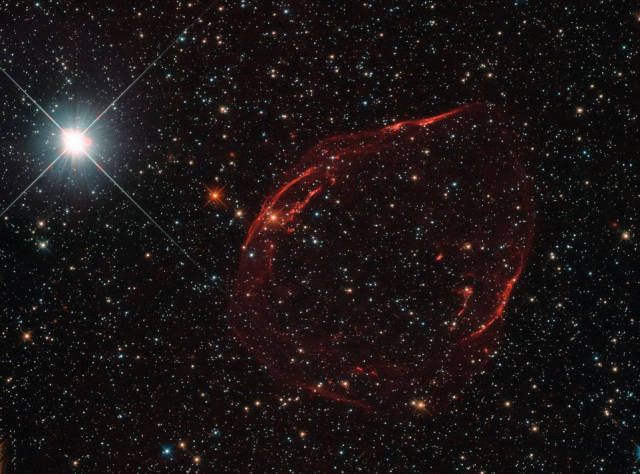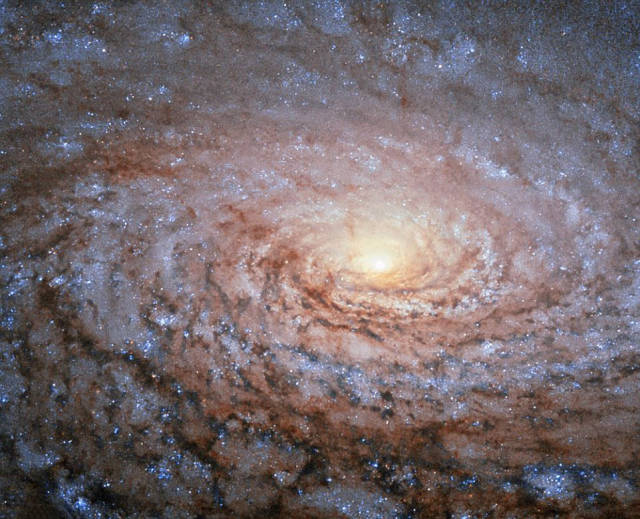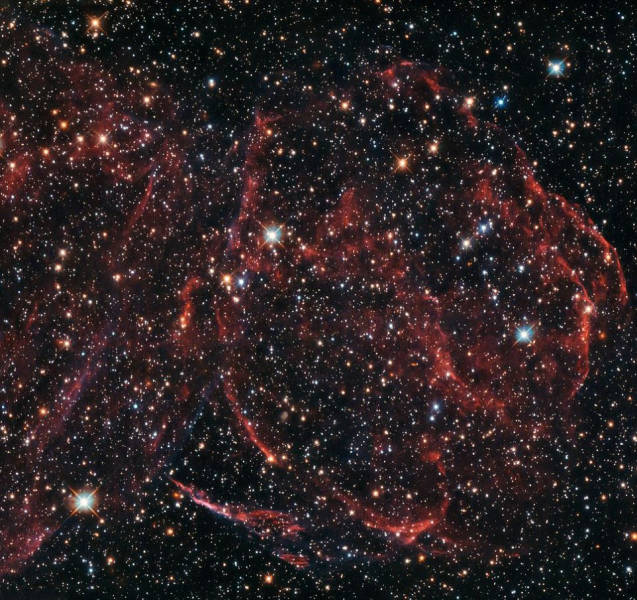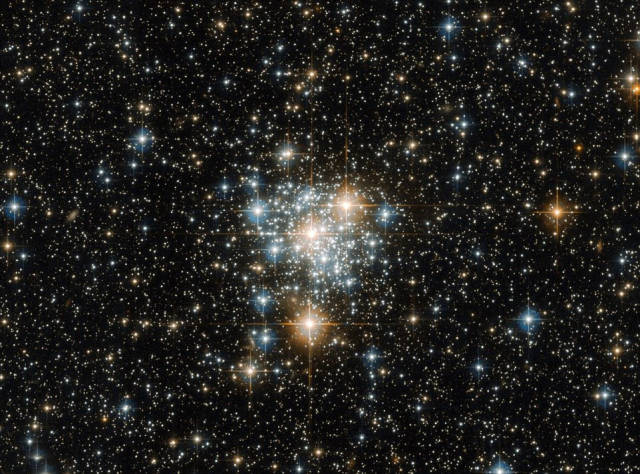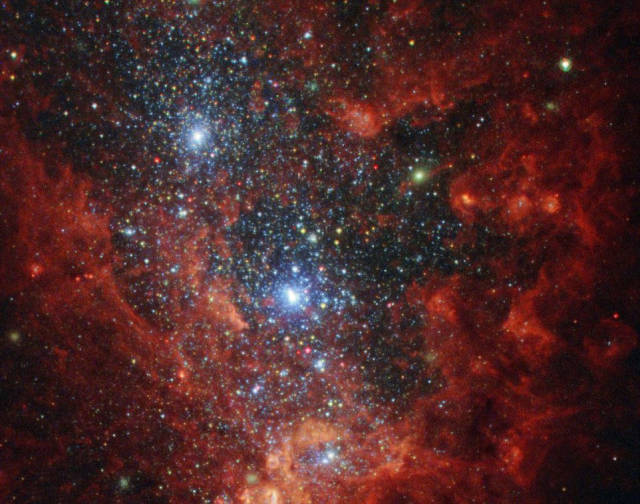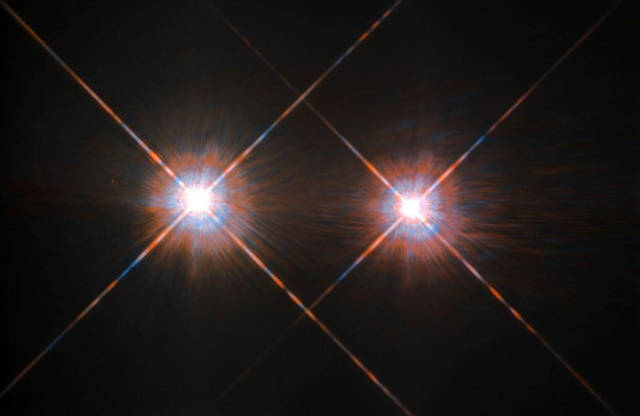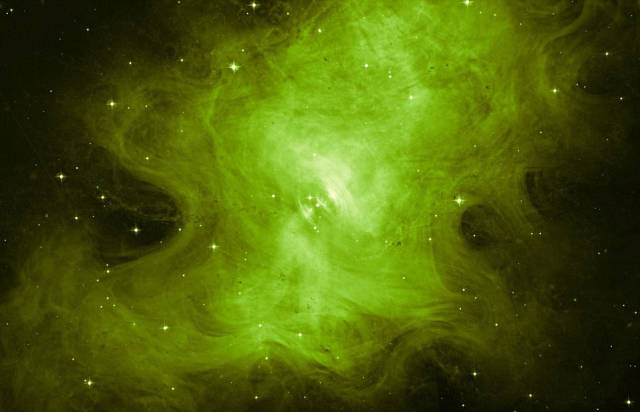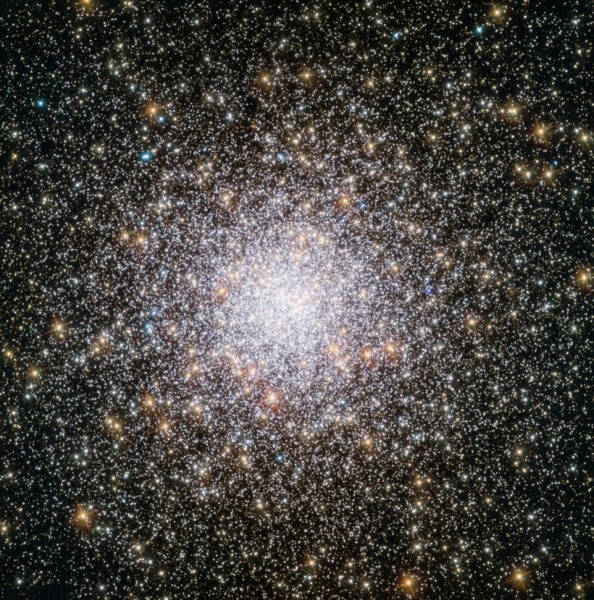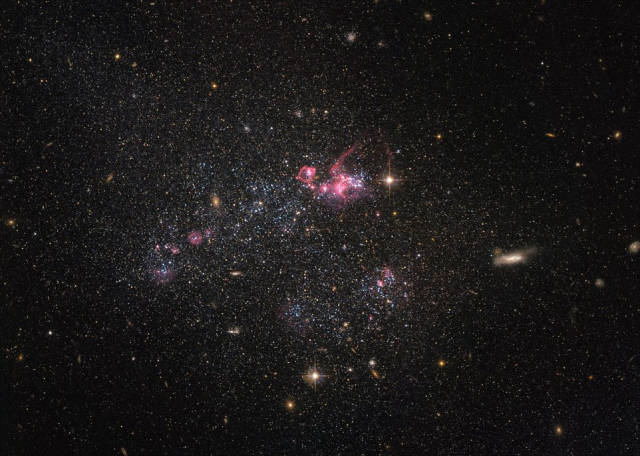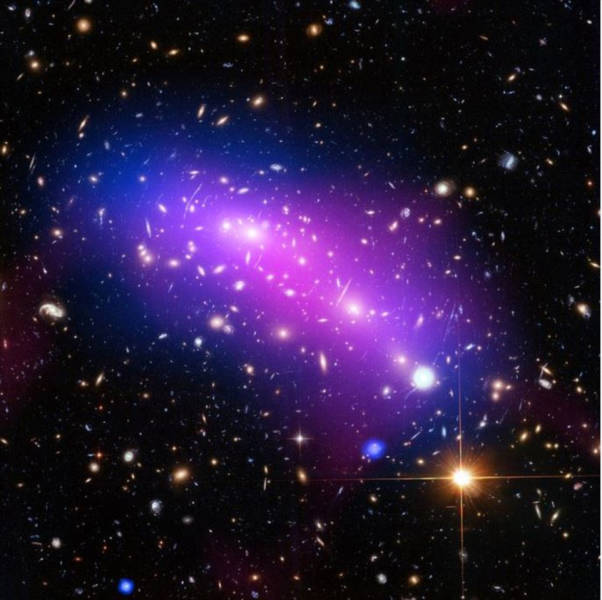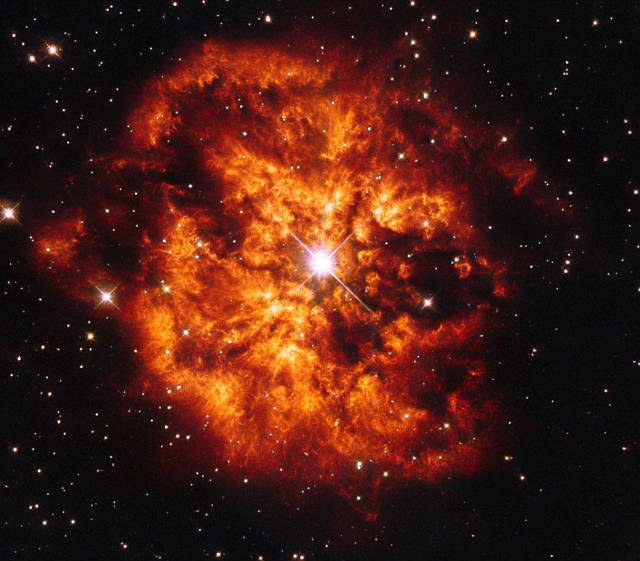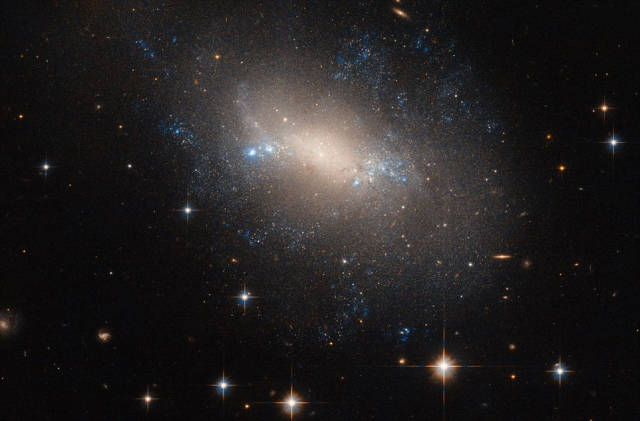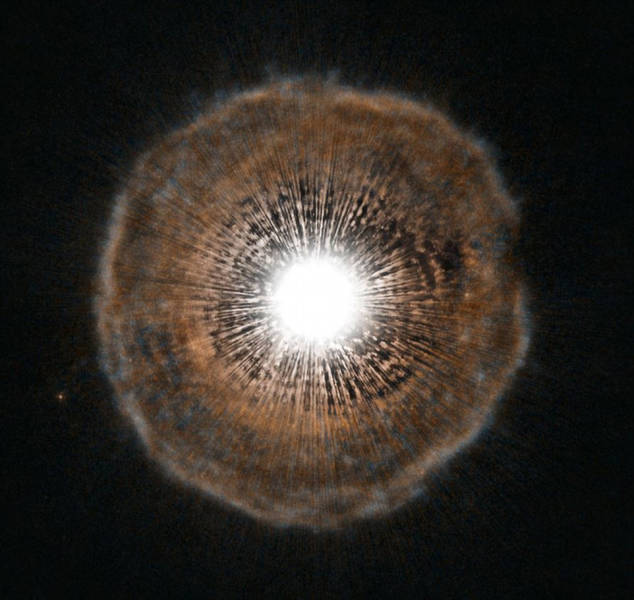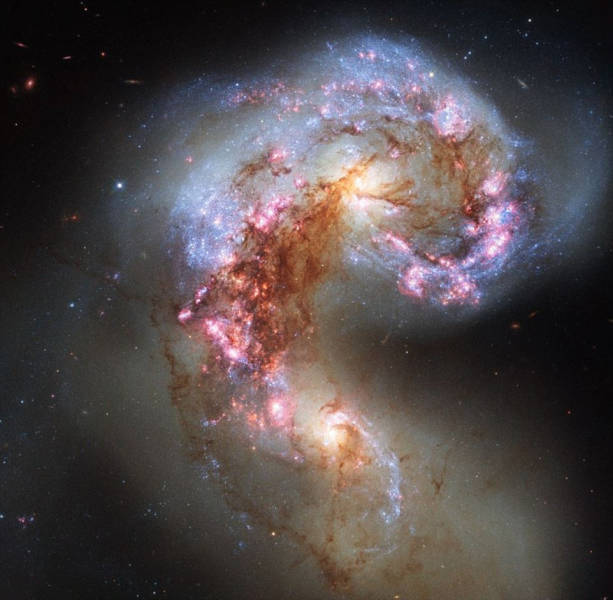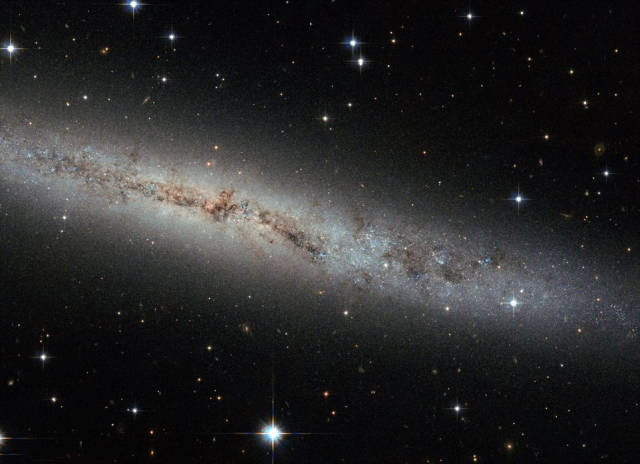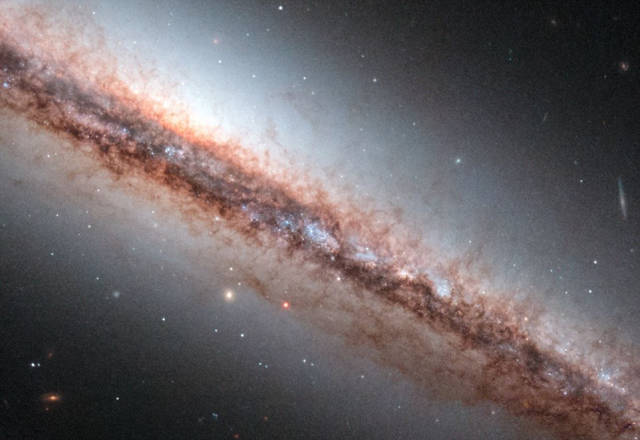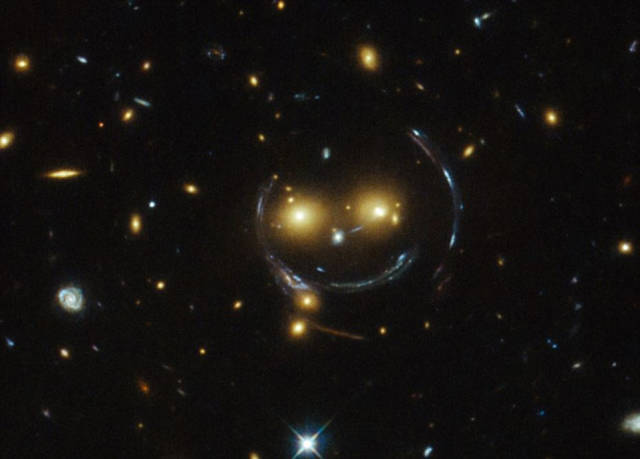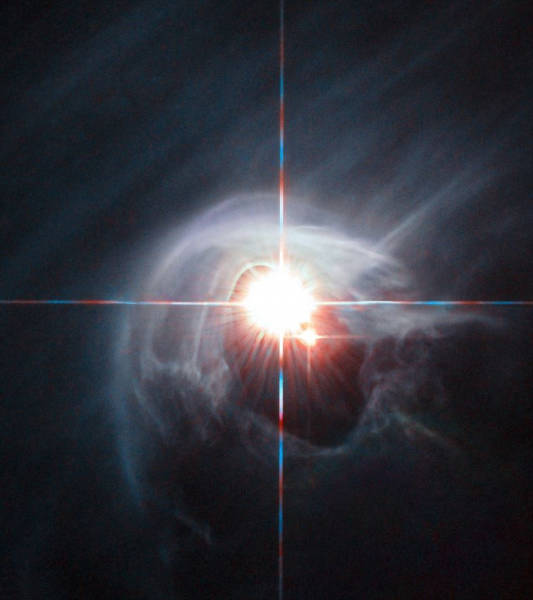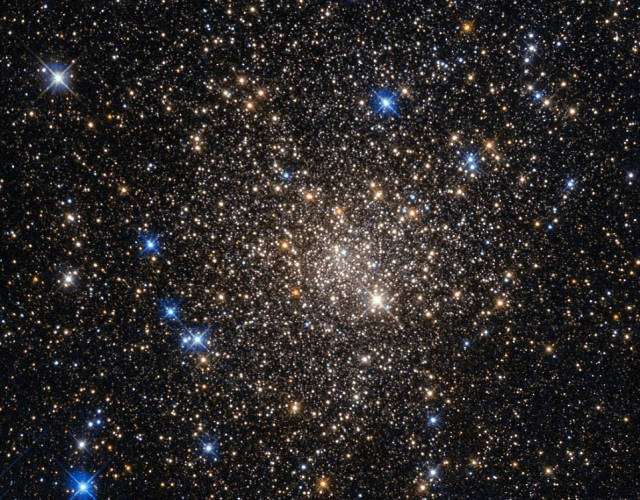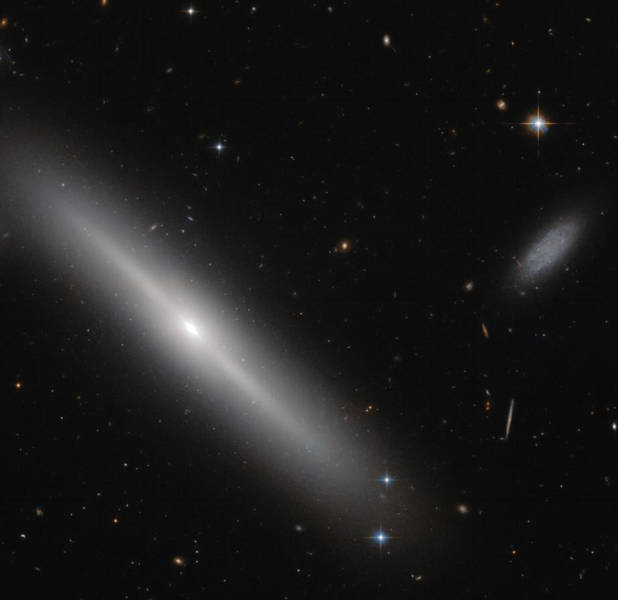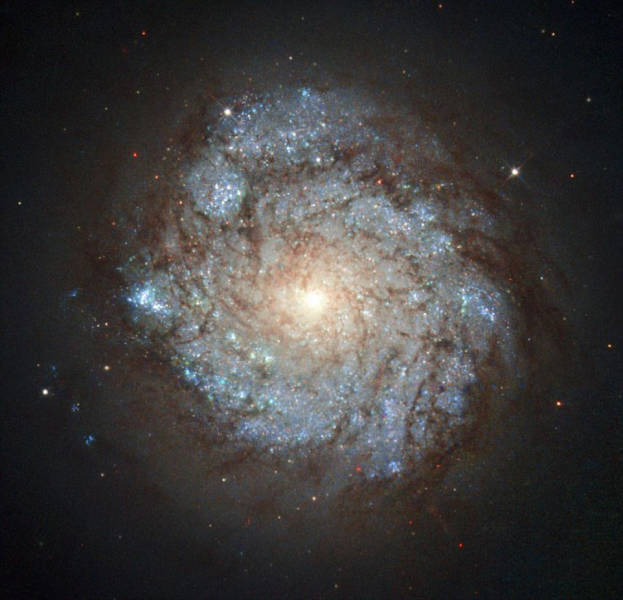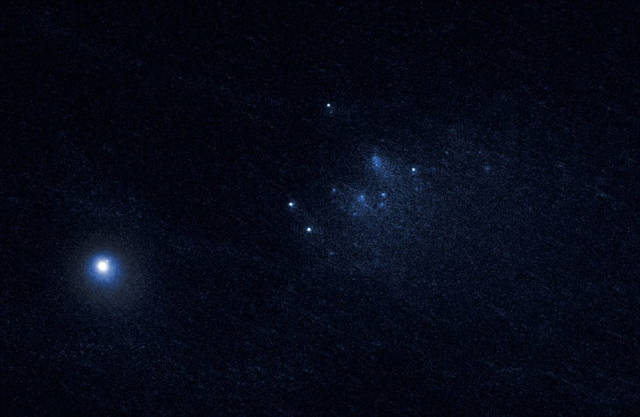Into the storm: This is a 'stellar nursery' more than 150 light-years wide containing lots of hot young stars. These stars are emitting intense ultraviolet light, which causes the hydrogen gases nearby to glow. At the heart of the cloud lies the Papillon Nebula, a dense object linked to the early stages of massive star formation
Stellar shrapnel: The red swirls and streaks in this image are actually the aftermath of a star, some 160 000 light-years away from Earth, that exploded several thousand years ago. The explosion scattered stellar shrapnel across the sky. The star, known as DEM L71, was a white dwarf located in the Large Magellanic Cloud, one of our nearest neighbouring galaxies
A galactic sunflower: This is an image of a galaxy in the northern constellation of the Hunting Dogs, about 16 million light-years away. Within the 'starburst ring' new stars are forming at a high rate and many young, bright stars are present
A long dead star: Another photo of a long-dead star. The rippling red wisps are ionised gas 160,000 light-years away. It is believed the star exploded when its gravity became too strong and it started drawing in more material than it could handle from a nearby companion. When it became too unbalanced it exploded in a spectacular release of energy ejects the star's outer layers into the surrounding space at immense speeds
The Toucan and the cluster: The southern constellation of Tucana (The Toucan) contains a variety of cosmic beauties. The NGC 299 (pictured) is an open star cluster located within the Small Magellanic Cloud just under 200 000 light-years away. These open clusters are collections of stars losely bound by the shackles of gravity, all of which formed from the same massive molecular cloud of gas and dust
Bursting at the seams: A small galaxy about eleven million light-years away in the constellation Camelopardalis (The Giraffe). This galaxy is a hotbed of vigorous star formation
Image of Alpha: The closest star system to the Earth is the Alpha Centauri group in the constellation of Centaurus (The Centaur). They are an astonishing 4.3 light-years away and made up of the stars Alpha Centauri A and Alpha Centauri B, plus the faint red dwarf Alpha Centauri C. Hubble Space Telescope captured this stunning view of the bright Alpha Centauri A (left) and Alpha Centauri B (right), flashing like huge cosmic headlamps in the dark
A whole new view of the Crab Nebula: In 1054 AD Chinese astronomers spotted a bright new star in the night sky. This newcomer turned out to be a violent explosion in the Milky Way, caused by the death of a star some 1600 light years away. This explosion created one of the most well-studied and beautiful objects in the night sky — the Crab Nebula
Youthful: The spheres containing hundreds of thousands of stars on the outskirts of galaxies are known as globular clusters. The Milky Way contains more than 150 such clusters. The one shown here, named NGC 362, is believed to be between 10 and 11 billion years old, much younger than the Milky Way which is estimated to be more than 13 billion years old
A distinctly disorganised dwarf: This irregular dwarf galaxy is approximately 11 million light-years from Earth in the constellation of Ursa Major (The Great Bear). Irregular dwarf galaxies are actually one of the most common types of galaxy in the Universe and are often chaotic in appearance
A cosmic kaleidoscope: At first glance, this cosmic kaleidoscope of purple, blue and pink offers a strikingly beautiful — and serene — snapshot of the cosmos. However, this multi-coloured haze actually marks the site of two colliding galaxy clusters, forming a single object, known as or MACS J0416. It is about 4.3 billion light-years from Earth, in the constellation of Eridanu
A cosmic couple: Here we see the spectacular cosmic pairing of the star and the nebula which surrounds it. Both are found in the constellation of Sagitta and sit 15,000 light-years away. The star shines brightly at the very centre of this explosive image and around it, hot clumps of gas are ejected into space at more than 150,000 km per hour
A lopsided lynx: This galaxy, known as NGC 2337, resides 25 million light-years away in the constellation of Lynx. NGC 2337 is an irregular galaxy, meaning that it — along with a quarter of all galaxies in the Universe — lacks a distinct, regular appearance. The galaxy was discovered in 1877 by the French astronomer Édouard Stephan who, in the same year, discovered the galactic group Stephan's Quintet (heic0910i).
Red giant blows a bubble: Camelopardalis is a red giant - a huge star running low on fuel and nearing the end of its life. Every few thousand years, Camelopardalis coughs out a nearly spherical shell of gas as a layer of helium around its core begins to fuse. The gas ejected in the latest eruption is visible as a faint bubble surrounding the star
Galaxies reloaded: The NASA/ESA Hubble Space Telescope snapped the clearest ever image of the Antennae Galaxies. The galaxies — scientifically known as NGC 4038 and NGC 4039 — are locked in a deadly embrace. Once normal, sedate spiral galaxies like the Milky Way, the pair have spent the past few hundred million years sparring with one another. This clash is so violent that stars have been ripped from their host galaxies to form a streaming arc between the two
Flat as a pancake: This is a spiral galaxy some 25 million light-years away. We see it side-on as a thin, glittering streak across the sky, with all its contents neatly aligned in the same plane. This galaxy is the shape it is because it began life as a huge ball of slowly rotating gas. As it collapsed in on itself, it started to spin faster and faster until, like pizza dough spinning and stretching in the air, the disc pictured here started to form
Grand swirls: This is a beautiful galaxy, approximately 40 million light-years, sits in the constellation of Dorado or The Dolphinfish. The centre of the galaxy is very active and emits strong bursts of radiation. Scientists believe it is potentially harbouring supermassive black hole many millions of times the mass of our Sun
Dust: Here Hubble has captured a closeup look at a spiral galaxy 60 million light-years away. The galaxy is seen almost perfectly edge on and shows extraplanar dust structures — the patterns of gas and dust above and below the plane on the galaxy
A smiling lense: Two faint galaxies appear to be smiling in this Hubble image. The two orange 'eyes' are actually far away galaxies and the 'smile' lines are caused by an effect known as strong gravitational lensing. This happens when massive structures in the Universe exert such a powerful gravitational pull that they can warp the spacetime around them and act as cosmic lenses which can magnify, distort and bend the light behind them
Smoke ring for a halo: Two faraway stars are shining through the centre of a ring of cascading dust in this image
A home for old stars: This image, taken with the Wide Field Planetary Camera 2, shows cluster of stars around 20,000 light-years from us in the constellation Scorpius. It is one of about 150 globular clusters, collections of around a hundred thousand stars, in the Milky Way
Infant stars artistic outburst: This is the outburst of an extremely young star, in the earliest phase of its formation. Pictured punching through the stardust cloud is an extremely hot, blue jet of gas
Busy Bees: Star clusters encircle a galaxy, like bees buzzing around a hive. The 'hive' is just under 100 million light-years away in the constellation of Ursa Major (The Great Bear)
Cassiopeia's unusual resident: This is the a spiral galaxy named NGC 278, which lies some 38 million light-years away in the northern constellation of Cassiopeia or 'The Seated Queen'. The blue knots speckling the galaxy's spiral arms are clumps of hot newborn stars
Cosmic Fragments: This intriguing image shows a dust-bathed cluster of fragments from a disintegrated comet. The comet in question, named 332P/Ikeya-Murakami, split into this shower of fragments in the closing months of 2015

